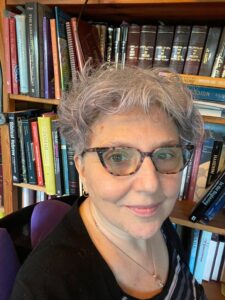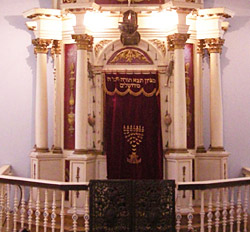
The ancient sages Hillel and Shammai disagreed about how to kindle the Chanukah lights. Hillel said light one light the first night, then increase each night, until on the eighth night we light eight. Shammai said to start the first night with eight, and decrease nightly to one, more closely paralleling the decreasing amount of oil that would have been left that first Chanukah when one day’s worth of oil lasted eight days. The tradition says that, in general, Hillel and Shammai are both right, but we go by Hillel. Additionally, in the case of Chanukah, Hillel’s perspective is followed because in all things we attempt to increase in holiness, not decrease, so kindling more and more light seems right.
My friend Rabbi Sami Barth suggested to me this year that I should go by Shammai, because I connect so deeply with the sacred dark—he said, I would still be increasing in holiness, by increasing the dark each night. I thought about that, and realized that, although the dark of this time is so precious to me, (I love an essay by Levinas that talks about the darkness inside the vial that held the miracle oil), nonetheless, I want to increase the flames each night, because I have always seen Chanukah partly as a sympathetic magic practice where we increase the light each night in rhythm with the lengthening days. I believe that this is the reason why we light the candles from left to right, even though we add them to the menorah from right to left. The Temple menorah was on the south wall, and if we face south, and light from left to right, we are lighting sun-wise, that is, the direction the sun moves across the sky.
This Chanukah I was also telling our houseguest who lives in Australia that there have been conversations in recent years among Jews in the southern hemisphere about how to practice our seasonal holidays—people want to stay in sync with the rest of the Jewish world, and yet it is odd to have spring holidays in the fall, winter holidays in the summer, etc. It occurred to me that it would make sense for Jews in the southern hemisphere to follow Shammai, and light one less candle each night, decreasing the light each night around the summer solstice, as the nights start to lengthen. They would thereby continue to celebrate the holiday with the rest of the Jewish world, but also be in rhythm with the seasonal darkening of the time.







